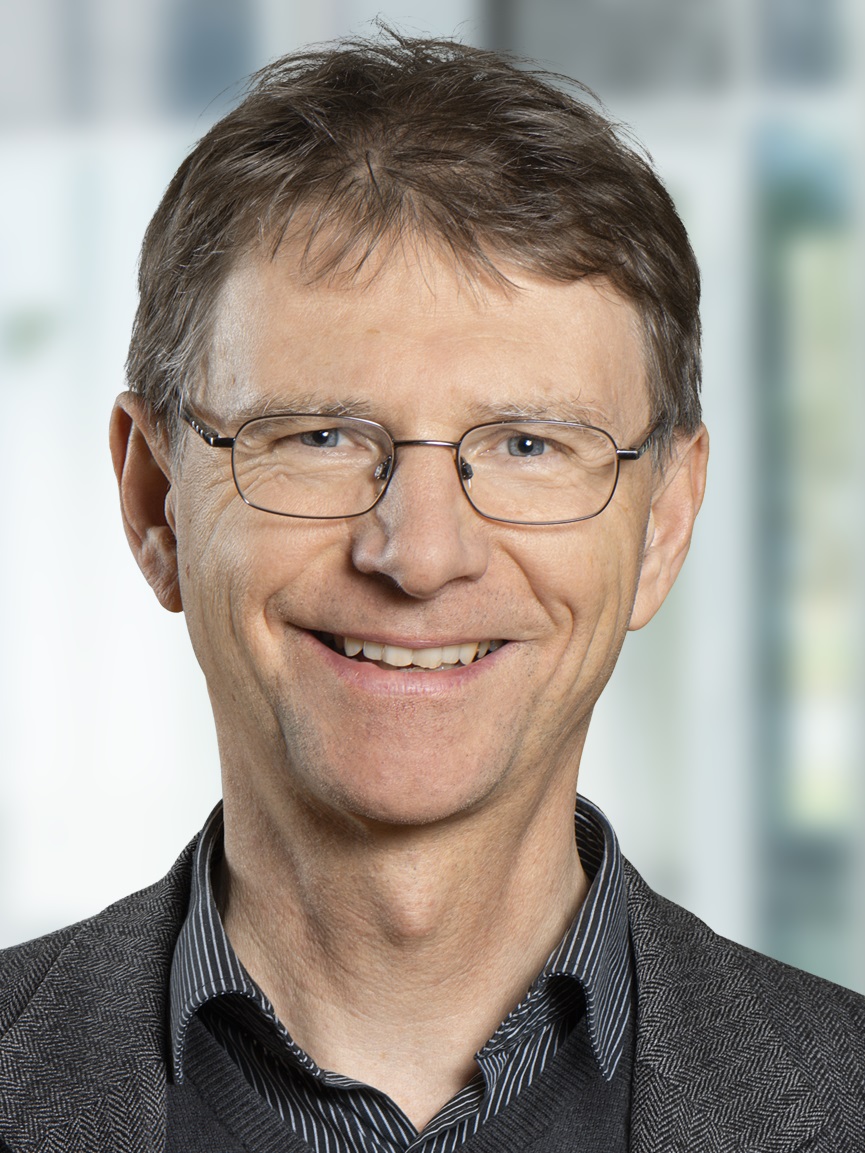Optical methods could replace traditional manometers, and scientists at the U.S. National Institute of Standards and Technology (NIST) have designed a fixed-length optical cavity for precise pressure measurements. Dr. Karl Jousten, head of the vacuum metrology section at the German national metrology institute, Physikalisch-Technische Bundesanstalt (PTB), Berlin, explains the potential of the technique.
NIST has developed a fixed-length optical cavity (FLOC) for pressure measurement. How does FLOC work?
You lock a laser to an optical cavity under vacuum condition, and keep the laser locked. Locked means that the laser light behaves like a standing wave in the cavity, and you, therefore, have a certain number of half wavelengths fitting into this optical cavity. Then you let some gas into the cavity, which leads to changes in the density. Then, the wavelengths of the standing wave are slightly changing as well, and to compensate for this, the frequency is changed. And the difference in the frequencies of the gas-filled and the “empty” cavity is the final value that you measure.
To measure this frequency difference, you can either use two cavities or a frequency standard which is compared to the frequency in the cavity. If you use two cavities, one is always kept under vacuum conditions. You let some gas in the other one and measure the frequency difference between the two cavities.
Do you think that FLOC has potential?
Yes. There are different optical methods to measure pressure, and the most attractive one is the one where you can relate the derived unit of the pascal in a more or less direct manner to the SI units—that is, to measure the refractive index, as in a FLOC. There are other optical methods, like absorption or fluorescence spectroscopy, but with these methods, it is not yet possible to realize the pressure in a manner so that you have a direct connection to the SI.
The refractive index method is perhaps the starting point now because it is very good at around 100 kPa. The mercury manometer, for example, or the piston gauges have the lowest measurement uncertainty in this range, and FLOC is comparable to that. And with the optical method, it will hopefully be reliable down to something like a pascal, or even lower.
Is there a defined range of pressure that can be measured? What would be the limits to the FLOC technique?
The limit on the high-pressure side is due to large corrections to the ideal gas law. The virial coefficients have to be used to calculate the pressure or the density of a real gas but they are known with limited accuracy. They are the overwhelming uncertainty then.
On the low-pressure side, the problem is that the refractive index is relatively small. It gets difficult at low pressures to measure the frequency difference at a reasonable resolution. This happens at one pascal, approximately.
Apart from that, probably the gas purity will be always an issue. If you do not have a pure gas, the refractive index will be a mixture of several gases, and then you cannot reliably determine the gas density. That is one of the disadvantages.
What are the advantages of the technique?
One of the attractive sides is that you may have a pressure instrument that needs no calibration. Once it is working, there is no need to recalibrate every five years or so, as you should do, for example, with a piston gauge or pressure balance. It is an absolute standard that needs no recalibration.
Could you briefly explain how your research is connected to FLOC?
At PTB, we are just at the beginning. It has been two years since we started this project.
One of the big problems is the cavity itself. It is compressed by pressure, so there is some deformation of the cavity. Another problem is that some glasses which are used as cavities also absorb helium, so there is a pumping effect of the cavity itself. The pressure inside the cavity might then be different from outside. And when you change the pressure to a lower value, then the reverse effect happens: The helium that is solved inside the cavity may outgas again and the pressure will be higher than outside.
We are investigating this and have designed a new cavity that is less prone to deformation. We already applied for a patent for that. That will be our contribution to this field.
Why did you decide to enter this field of research?
It is attractive for us because it is a completely new realization of the pascal. In metrology, it is important to always have some kind of redundancy. That means that you use two very different methods to measure the same quantity.
My personal view is that perhaps in a few decades we will measure the vacuum by gas density and not by pressure. We wanted to be at the beginning of this development. This was our main motivation.
How does the community accept the method?
Several national metrological institutes already picked up the method. In the beginning, it was NIST, RISE (the national metrological institute in Sweden), and PTB. And then it was also picked up by the Chinese National Institute, as well as Japanese and Taiwanese Institutes. I think more and more institutes are getting interested in it.
The method is still on the metrological research level, not yet so advanced that you can use it on an industrial level. But the community in the pressure and vacuum field is heading for these optical methods, which I think are more promising than the traditional ones.
Why do you think so? What are the disadvantages of current measurement methods?
Pressure is measured as force per area. Technically this is done either by mercury manometers or by pressure balances or piston manometers, in which pressure is exerted on a piston and balanced out against a gas or liquid.
These methods have several disadvantages. First, mercury is a fluid with a relatively high saturation pressure. When you calibrate with such a mercury manometer you always need to consider this pressure and make sure that the mercury does not affect the measuring instrument itself. So sometimes you need a diaphragm between the pressure measured by the mercury manometer and the unit under test.
Piston gauges have another disadvantage: You can only measure certain pressures according to the mass pieces that you can place on the piston-cylinder assembly. For us, from the vacuum metrology side, pressure is not the important quality. Normally, when you work with vacuum, you want to get rid of gas molecules. At such low pressures, the pressure is not exerting much force, so it is more practical to look at the density of gas particles. In other processes, such as CVD, PVD, or plasma applications, you want to adjust a certain density, not pressure.
Optical methods, on the other hand, would measure the density directly.
Do you think that maybe in the future, optical techniques like FLOC will completely replace the “old” methods, or will they rather exist beside each other?
I think in calibration laboratories they can replace them. It may be that in the vacuum field, there will be a complete change, perhaps, in the future. I am sceptical about the pressure field. I think that they will keep the same measurement methods as now because they are really interested in the force per area, which is not measured by the optical methods.
We have seen a redefinition of the SI basic units. Will the FLOC method lead to another change?
The metrology community of the SI is only determining the independent units and not the derived units, like the pascal. So, you cannot say that it is a redefinition of the pascal. We are completely free on how we define pressure. It does not matter if we define it as N/m2 or J/m3, it is the same unit. And in that sense, it is not a redefinition, but a new realization of the same quantity. According to technical developments, we sometimes change these realizations. But it is not a thing like the redefinition of the kilogram.
Thank you very much for these insights.
 Karl Jousten received his Ph.D. in physics in 1987 from the University of Heidelberg, Germany. In 1992, he became head of the vacuum metrology section at Physikalisch-Technische Bundesanstalt (PTB), Berlin, Germany.
Karl Jousten received his Ph.D. in physics in 1987 from the University of Heidelberg, Germany. In 1992, he became head of the vacuum metrology section at Physikalisch-Technische Bundesanstalt (PTB), Berlin, Germany.
He was president of the German Vacuum Society (DVG; Deutsche Vakuum Gesellschaft) from 2005 to 2008. Since 2005, he acts as chair of the Working Group “Pressure and Vacuum” within the Consultative Committee for Mass and Related Quantities (CCM) of the International Bureau of Weights and Measures, Sevres, France.
Selected Publications
- A unit for nothing,
Karl Jousten,
Nat. Phys. 2019, 15, 618–618.
https://doi.org/10.1038/s41567-019-0530-8 - Perspectives for a new realization of the pascal by optical methods,
Karl Jousten, Jay Hendricks, Daniel Barker, Kevin Douglas, Steve Eckel, Patrick Egan, James Fedchak, Jens Flügge, Christof Gaiser, Douglas Olson, Jacob Ricker, Tom Rubin, Wladimir Sabuga, Julia Scherschligt, Rene Schödel, Uwe Sterr, Jack Stone, Gregory Strouse,
Metrologia 2017, 54, S146–S161.
https://doi.org/10.1088/1681-7575/aa8a4d - Handbook of Vacuum Technology,
Jousten, Karl (Ed.)
Wiley-VCH, Weinheim, 2016.
ISBN: 9783527413386 - Comparison and assessment of procedures for calculating the R(12) line strength of the ν1+ 2 ν2+ ν3 band of CO2,
Gerd Wübbeler, Gerardo J. Padilla Víquez, Karl Jousten, Olav Werhahn, Clemens Elster,
J. Chem. Phys. 2011, 135, 204304.
https://doi.org/10.1063/1.3662134
Also of Interest
- Pressure’s 400-year-old measurement techniques get an upgrade,
Elizabeth Gibney,
Nature 2019, 570, 424–425.
https://doi.org/10.1038/d41586-019-01950-9 - World’s First Photonic Pressure Sensor Outshines Traditional Mercury Standard,
U.S. National Institute of Standards and Technology (NIST), 2014




